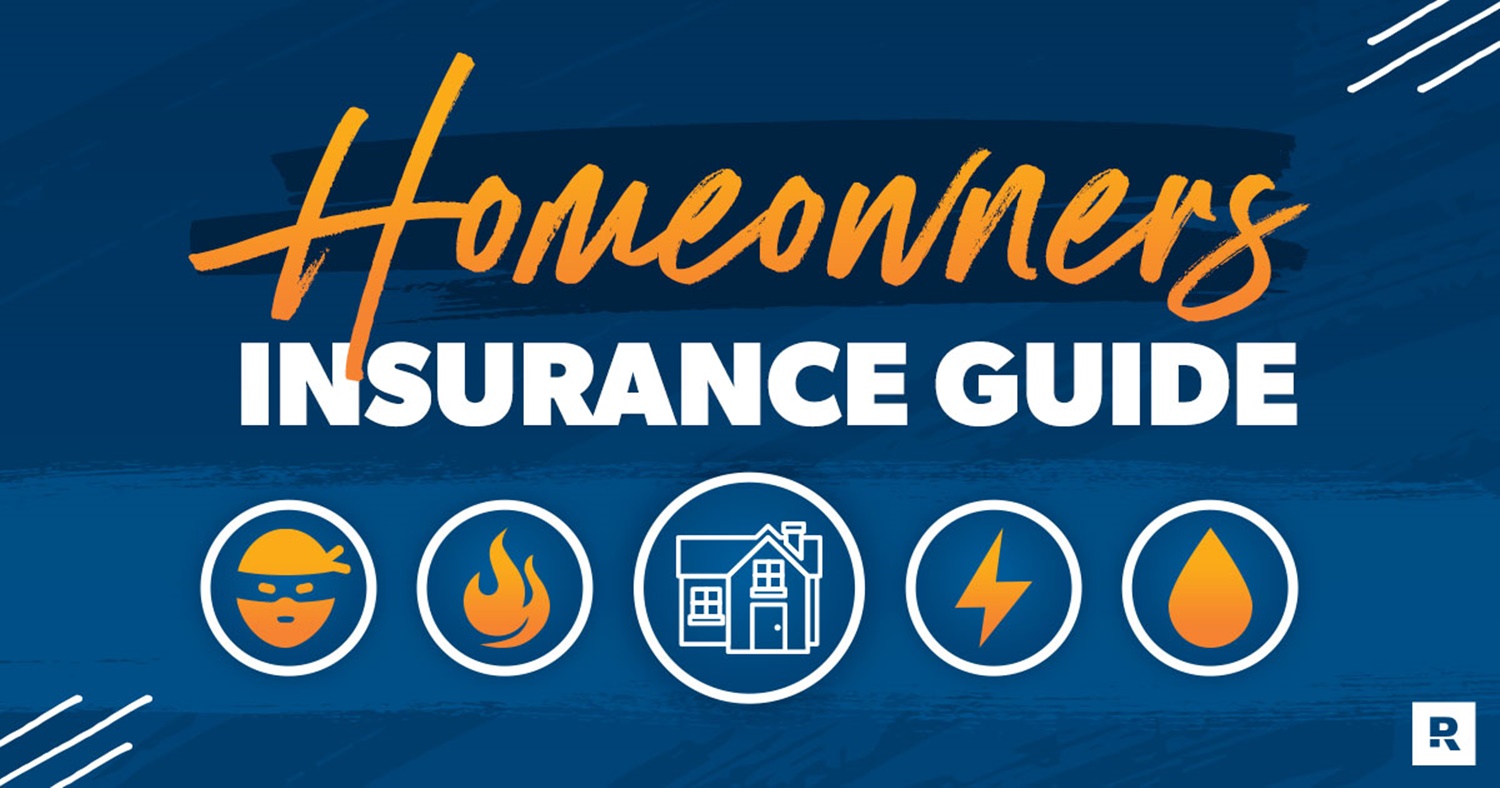A new home may be one of the biggest purchases you’ll make in your life. Before you begin shopping for the right home to buy, you’ll need to explore mortgage options if you’re planning to finance the purchase.
Not all home loans are the same, though. So, doing your research before moving forward can help you select the most suitable option for your financial situation and possibly keep more money in your pocket. Plus, you’ll know what to expect, in terms of guidelines, when you apply. 5 types of mortgage loans for home-buyers.
Types of mortgages
Conventional loan – Best for borrowers with a good credit score
Jumbo loan – Best for borrowers with excellent credit looking to buy an expensive home
Government-insured loan – Best for borrowers who have lower credit scores and minimal cash for a down payment
Fixed-rate mortgage – Best for borrowers who’d prefer a predictable, set monthly payment for the duration of the loan
Adjustable-rate mortgage – Best for borrowers who aren’t planning to stay in the home for an extended period, would prefer lower payments in the short-term and are comfortable with possibly having to pay more in the future
1. Conventional loan
Conventional loans, which are not backed by the federal government, come in two forms: conforming and non-conforming.
Conforming loans – As the name implies, a conforming loan “conforms” to the set of standards put in place by the Federal Housing Finance Agency (FHFA), which includes credit, debt and loan size. For 2022, the conforming loan limits are $647,200 in most areas and $970,800 in more expensive areas.
Non-conforming loans – These loans do not meet FHFA standards. Instead, they cater to borrowers looking to purchase more-expensive homes or individuals with unusual credit profiles
Pros of conventional loans
Can be used for a primary home, second home or investment property
Overall borrowing costs tend to be lower than other types of mortgages, even if interest rates are slightly higher
Can ask your lender to cancel private mortgage insurance (PMI) once you’ve reached 20 percent equity, or refinance to remove it
Can pay as little as 3 percent down on loans backed by Fannie Mae or Freddie Mac
Sellers can contribute to closing costs
Cons of conventional loans
Minimum FICO score of 620 or higher is often required (the same applies for refinancing)
Higher down payment than some government loans
Must have a debt-to-income (DTI) ratio of no more than 43 percent (50 percent in some instances)
Likely need to pay PMI if your down payment is less than 20 percent of the sales price
Significant documentation required to verify income, assets, down payment and employment
Who should get a conventional loan?
If you have a strong credit score and can afford to make a sizable down payment, a conventional mortgage is probably your best pick. The 30-year, fixed-rate conventional mortgage is the most popular choice for home-buyers. 5 types of mortgage loans for home-buyers
2. Jumbo loan
Jumbo mortgages are home loan products that fall outside FHFA borrowing limits. Jumbo loans are more common in higher-cost areas such as Los Angeles, San Francisco, New York City and the state of Hawaii, where home prices are often on the higher end.
Pros of jumbo loans
Can borrow more money to purchase a more expensive home
Interest rates on jumbo loans tend to be competitive with other conventional loans
This may be the only way for some borrowers to gain homeownership in areas with extremely high home values
Cons of jumbo loans
Down payment of at least 10 percent to 20 percent required in many cases
- A FICO score of 700 or higher usually required
- Cannot have a DTI ratio above 45 percent
- Must show you have significant assets in cash or savings accounts
- Usually require more in-depth documentation to qualify
Who should get a jumbo loan?
If you’re looking to finance a home with a selling price exceeding the latest conforming loan limits a jumbo loan is likely your best route.
3. Government-insured loan
The U.S. government isn’t a mortgage lender, but it does play a role in making home-ownership accessible to more Americans. Three government agencies back mortgages: the Federal Housing Administration (FHA), the U.S. Department of Agriculture (USDA) and the U.S. Department of Veterans Affairs (VA).
FHA loans
Backed by the FHA, these home loans come with competitive interest rates, and help make home-ownership possible for borrowers without a large down payment or pristine credit. You’ll need a minimum FICO score of 580 to get the FHA maximum of 96.5 percent financing with a 3.5 percent down payment. However, a score as low as 500 is allowed if you put at least 10 percent down. FHA loans require two mortgage insurance premiums, which can increase the overall cost of your mortgage. Lastly, with an FHA loan, the home seller is allowed to contribute to closing costs.
USDA loans
USDA loans help moderate- to low-income borrowers who meet certain income limits buy homes in rural, USDA-eligible areas. Some USDA loans do not require a down payment for eligible borrowers. There are extra fees, though, including an upfront fee of 1 percent of the loan amount (which can typically be financed with the loan) and an annual fee.
VA loans
VA loans provide flexible, low-interest mortgages for members of the U.S. military (active duty and veterans) and their families. There’s no minimum down payment, mortgage insurance or credit score requirement, and closing costs are generally capped and may be paid by the seller. VA loans charge a funding fee, a percentage of the loan amount, which can be paid upfront at closing or rolled into the cost of the loan along with other closing costs. 5 types of mortgage loans for home-buyers
Pros of government-insured loans
Help you finance a home when you don’t qualify for a conventional loan
- Credit requirements more relaxed
- Don’t need a large down payment
- Available to repeat and first-time buyers
- No mortgage insurance and no down payment required for VA loans
Cons of government-insured loans
Mandatory mortgage insurance premiums on FHA loans that cannot be canceled unless refinancing into a conventional mortgage
- Loan limits on FHA loans are lower than conventional mortgages in most areas, limiting potential inventory to choose from
- Borrower must live in the property (although you may be able to finance a multi-unit building and rent out other units)
- Could have higher overall borrowing costs
- Expect to provide more documentation, depending on the loan type, to prove eligibility
Who should get a government-insured loan?
Are you having trouble qualifying for a conventional loan due to a lower credit score or minimal cash reserves for a down payment?FHA-backed and USDA-backed loans could be a viable option. For military service members, veterans and eligible spouses, VA-backed loans are often better than a conventional loan.
4. Fixed-rate mortgage
Fixed-rate mortgages maintain the same interest rate over the life of your loan, which means your monthly mortgage payment always stays the same. Fixed loans typically come in terms of 15 years or 30 years, although some lenders allow borrowers to pick any term between eight and 30 years.
Pros of fixed-rate mortgages
Monthly principal and interest payments stay the same throughout the life of the loan
Easier to budget housing expenses from month to month
Cons of fixed-rate mortgages
If interest rates fall, you’ll have to refinance to get that lower rate
Interest rates typically higher than rates on adjustable-rate mortgages (ARMs)
Who should get a fixed-rate mortgage?
If you are planning to stay in your home for at least five to seven years, and want to avoid the potential for changes to your monthly payments, a fixed-rate mortgage is right for you.
5. Adjustable-rate mortgage (ARM)
Unlike the stability of fixed-rate loans, adjustable-rate mortgages (ARMs) have interest rates that fluctuate with market conditions. Many ARM products have a fixed interest rate for a few years before the loan changes to a variable interest rate for the remainder of the term. For example, you might see a 7-year/6-month ARM, which means that your rate will remain the same for the first seven years and will adjust every six months after that initial period. If you consider an ARM, it’s essential to read the fine print to know how much your rate can increase and how much you could wind up paying after the introductory period expires.
Pros of ARMs
Lower fixed rate in the first few years of home-ownership (although this isn’t a guarantee; as of late, 30-year fixed rates have actually been keeping pace with 5/1 ARMs)
Can save a substantial amount of money on interest payments
Cons of ARMs
Monthly mortgage payments could become unaffordable, resulting in a loan default
Home values may fall in a few years, making it harder to refinance or sell before the loan resets
Who should get an ARM?
If you don’t plan to stay in your home beyond a few years, an ARM could help you save on interest payments. However, it’s important to be comfortable with a certain level of risk that your payments might increase if you’re still in the home.
Other types of home loans
In addition to these common kinds of mortgages, there are other types you may find when shopping around for a loan: 5 types of mortgage loans for home-buyers
Construction loans –
If you want to build a home, a construction loan can be a good choice. You can decide whether to get a separate construction loan for the project and a separate mortgage to pay it off. A construction-to-permanent loan, which merges construction costs and financing into a single loan product, is also an option.Both options typically require a higher down payment and proof that you can afford the monthly payments.
Interest-only mortgages
With an interest-only mortgage, the borrower makes interest-only payments for a set period – usually between five and seven years- followed by payments for both principal and interest You won’t build equity as quickly with an interest-only mortgage, though, since you’re initially only paying interest for a set period. Still, these loans are best for those who know they can sell or refinance, or for those who can reasonably expect to afford the higher monthly payment later.
Piggyback loans –
A piggyback loan, also referred to as an 80/10/10 loan, actually involves two loans: one for 80 percent of the home price and another for 10 percent. You’ll make a down payment for the remaining 10 percent.These loan products are designed to help the borrower avoid paying for mortgage insurance. While eliminating those PMI payments might sound appealing, keep in mind that piggyback loans require two sets of closing costs, and you’ll also accrue interest on two loans. Crunch the numbers to find out if you’re really saving enough money to justify this unconventional arrangement.
Balloon mortgages –
Another type of home loan you might come across is a balloon mortgage, which requires a large payment at the end of the loan term. Generally, you’ll make payments based on a 30-year term, but only for a short time, such as seven years. When the loan term ends, you’ll make a large payment on the outstanding balance, which can be unmanageable if you’re not prepared or your credit situation deteriorates. 5 types of mortgage loans for home-buyers
Next steps
Now that you have an idea of the right kind of loan for your home purchase, it’s time to find the right mortgage lender to make it happen. Every lender is different, and it’s important to comparison shop to find the best terms that fit your finances. From the brick-and-mortar bank and credit unions in your neighborhood to online-only mortgage companies, there is a wide range of options to choose from.


